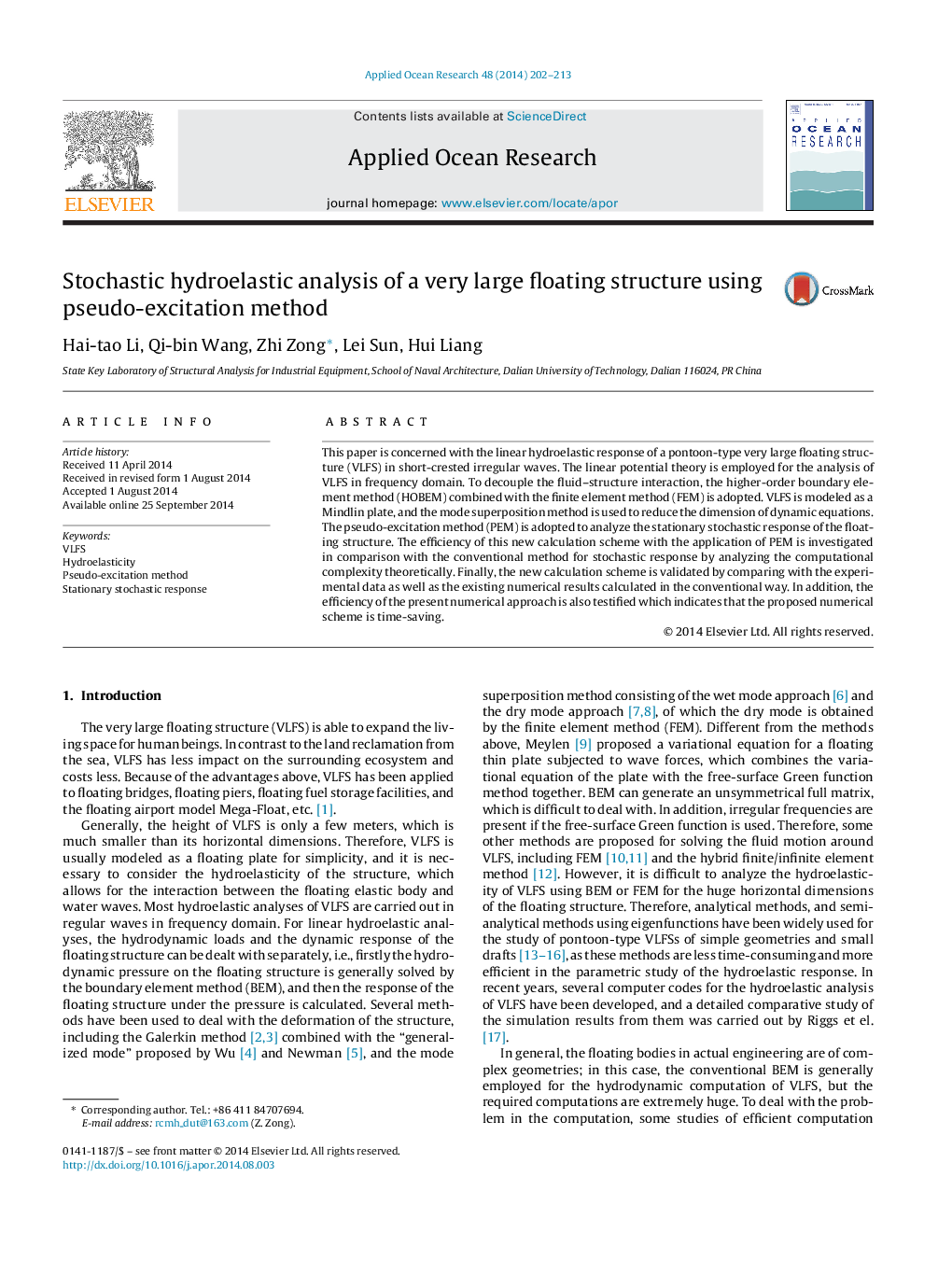| Article ID | Journal | Published Year | Pages | File Type |
|---|---|---|---|---|
| 1720000 | Applied Ocean Research | 2014 | 12 Pages |
•We develop a new calculation scheme for stochastic hydroelastic analyses of VLFS using the pseudo-excitation method.•The efficiency and accuracy of this calculation scheme are studied theoretically and testified by numerical examples.•The hybrid FEM–BEM is used to analyze the hydroelastic response of VLFS.
This paper is concerned with the linear hydroelastic response of a pontoon-type very large floating structure (VLFS) in short-crested irregular waves. The linear potential theory is employed for the analysis of VLFS in frequency domain. To decouple the fluid–structure interaction, the higher-order boundary element method (HOBEM) combined with the finite element method (FEM) is adopted. VLFS is modeled as a Mindlin plate, and the mode superposition method is used to reduce the dimension of dynamic equations. The pseudo-excitation method (PEM) is adopted to analyze the stationary stochastic response of the floating structure. The efficiency of this new calculation scheme with the application of PEM is investigated in comparison with the conventional method for stochastic response by analyzing the computational complexity theoretically. Finally, the new calculation scheme is validated by comparing with the experimental data as well as the existing numerical results calculated in the conventional way. In addition, the efficiency of the present numerical approach is also testified which indicates that the proposed numerical scheme is time-saving.
